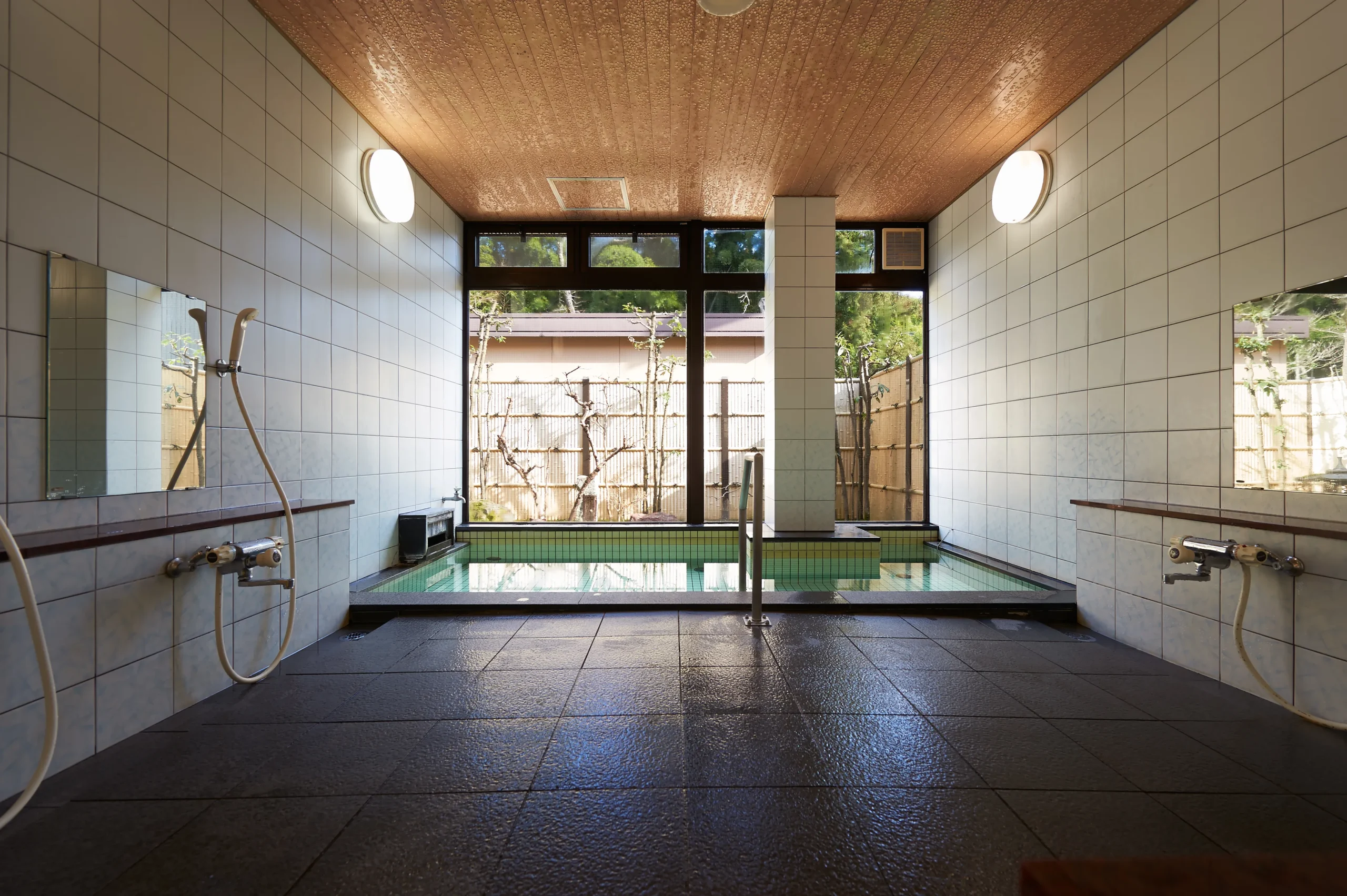
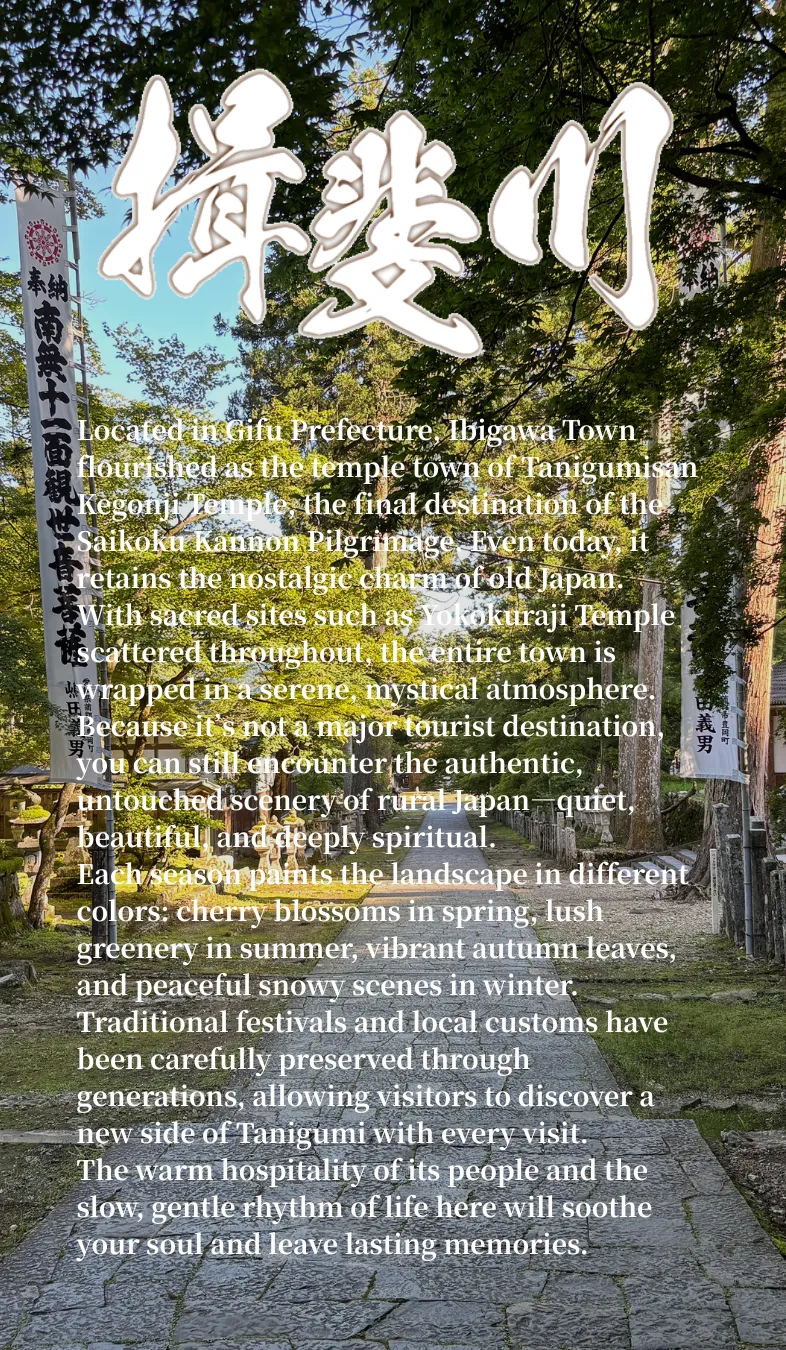
TANIGUMISAN KEGONJI TEMPLE




TANIGUMISAN KEGONJI TEMPLE
2 Tokuzumi, Tanigumi, Ibigawa-cho, Ibi-gun, Gifu 501-1311
0585-55-2033
https://www.kegonji.or.jp
Kegonji Temple is the final temple on the Saikoku Pilgrimage circuit dedicated to Kannon. Known as the “Temple of Fulfilled Vows,” it attracts visitors from all over Japan. This pilgrimage is not a “journey contemplating death,” but rather a “journey to live better.” It is said that Kannon transforms into 33 forms to comfort and aid the heart of every person. Spring brings cherry blossoms, summer deep greenery, autumn vibrant foliage, and winter serene snowy landscapes which can all be enjoyed here. Tea houses and souvenir shops line the approach path, offering a soothing stroll. Passing through the mountain gate, the air changes, filled with the scent of wood and the wafting smoke of incense. Here, you can forget the hustle and bustle of daily life, calm your mind, and quietly put your hands together in prayer.
RYOKAISAN YOKOZŌJI TEMPLE




RYOKAISAN YOKOZŌJI TEMPLE
1160 Kamihara, Tanigumi, Ibigawa-cho, Ibi-gun, Gifu 501-1317
0585-55-2811
https://www.town.ibigawa.lg.jp/0000007337.html
Yokokura Temple was built 1,200 years ago by a monk named Saichō. Nestled in the mountains, it is a temple with a very quiet and serene atmosphere. Its principal image is the Buddha known as Yakushi Nyorai, believed to have the power to alleviate people’s illnesses and mental anguish. Additionally, the temple houses the mummified body of the monk Myōshin Shōnin, who entered samadhi during his ascetic training. His body remains preserved in its natural state, a phenomenon extremely rare in Japan. The treasure hall contains numerous Buddhist statues and carvings dating back over 800 years, each exuding a profound sense of history. In autumn, 400 maple trees blaze crimson, creating a stunning contrast with the three-storied pagoda and the red bridge. This temple, where Japanese faith and nature harmonize, offers a place for the soul to find peace.
OKUNOIN




OKUNOIN
2 Tokuzumi, Tanigumi, Ibigawa-cho, Ibi-gun, Gifu 501-1311
Deep within the grounds of Kegonji Temple
0585-55-2033
https://www.kegonji.or.jp
Okunoin, or the Inner Sanctuary, is a sacred place deep within the mountains of Kegonji Temple. Slowly climbing the path to the right of Mangando Hall, you’ll find lines of small Kannon halls. There are thirty-three in total, each with a different face and expression. Light filters through the trees, and the sound of water flowing through the valley gently envelops your heart. After passing the twelfth statue, the slope becomes steeper, but reaching the top brings you to the hall enshrining the Eleven-Faced Kannon. Continuing about 100 meters further, you’ll find the hall of Fudō Myō-ō and the Myōhō Cave, where pure water springs forth. Legend says that grinding ink with this water and writing with it improves one’s calligraphy. This quiet path, where nature and faith merge, offers time for self-reflection.
BANSHUZAN ZUIGAN HOKOKUZEN TEMPLE


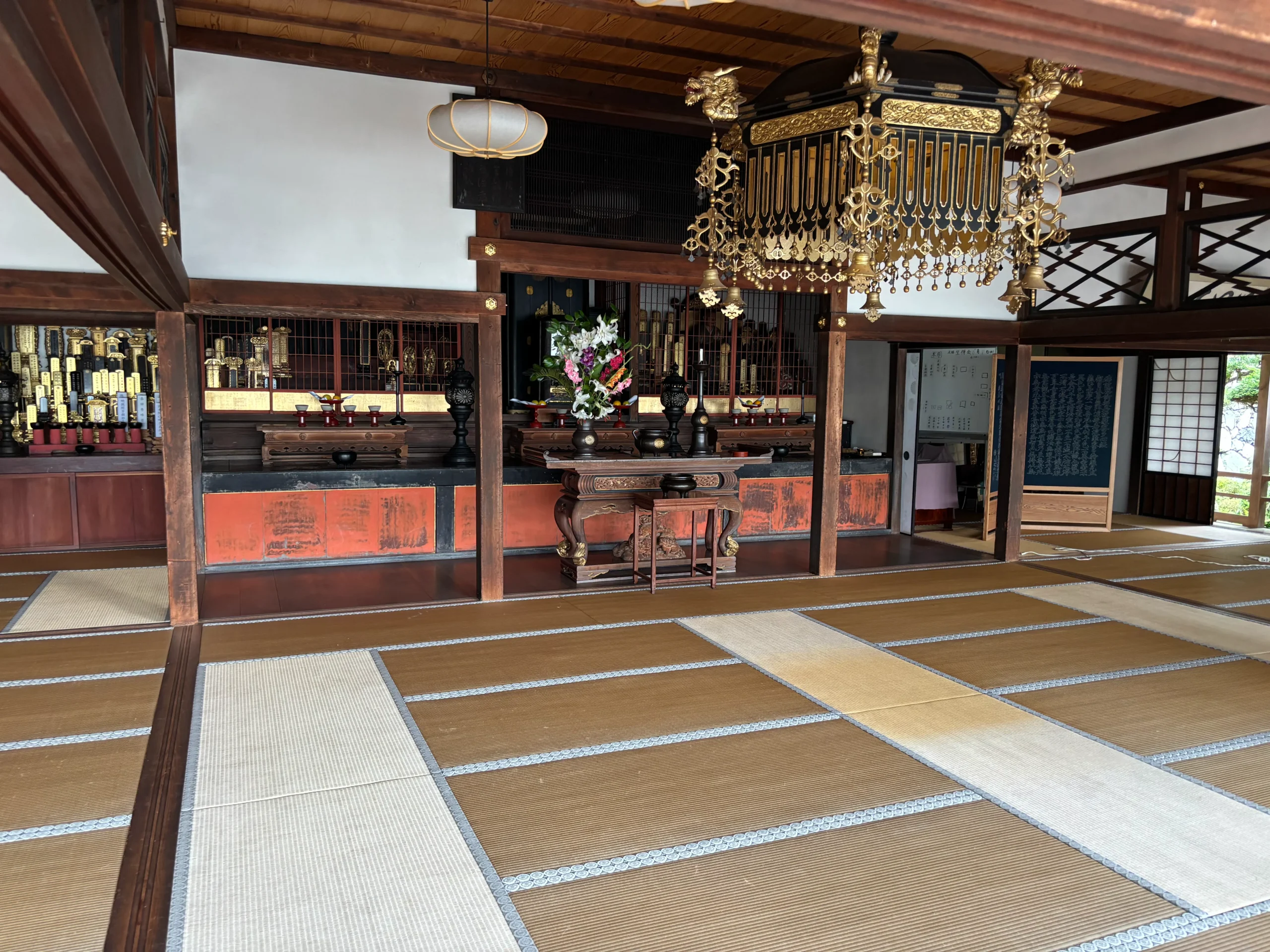

BANSHUZAN ZUIGAN HOKOKUZEN TEMPLE
192 Zuiganji, Ibigawa-cho, Ibi-gun, Gifu 501-0626
0585-22-1553
https://www.nisimino.com/nishimino33reijyou/jouhou/11.html
The history of Zuiganji Temple began about 1,300 years ago when the monk Gyoki enshrined Jizo Bosatsu at this site. Countless people have offered prayers here over the centuries since. Nestled in the mountains, the temple is incredibly peaceful, where time flows slowly. Here, you can experience “Zazen meditation,” which helps regulate your breathing and calm your mind. Practicing Zazen allows your feelings to become calm and helps you connect with your inner self. Inside the temple, you’ll find important cultural treasures like statues of Jizo Bosatsu and Enku Buddha, making it a place where you can feel Japan’s traditions and spirit.
TANIGUMI DANCE PRESERVATION SOCIETY
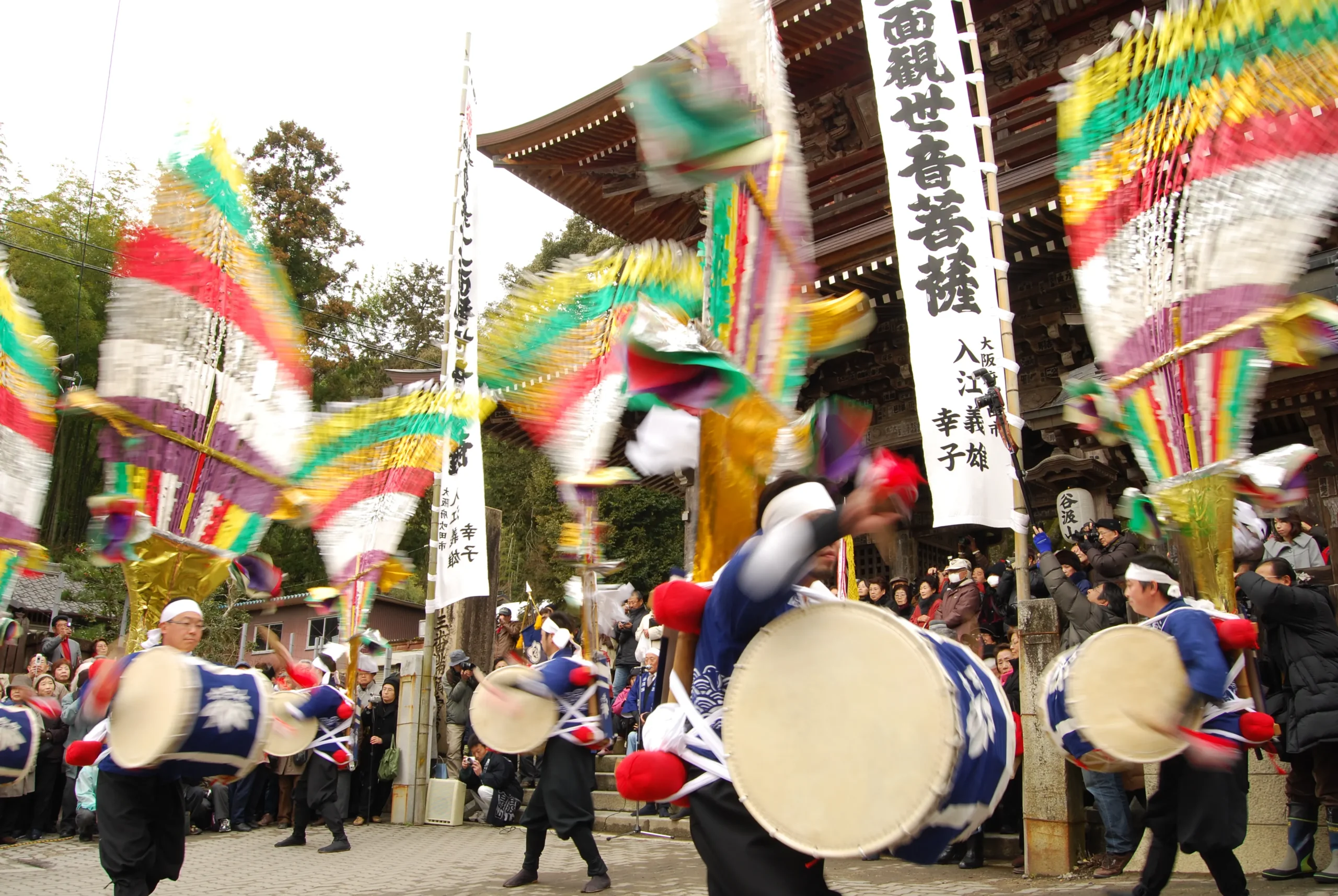


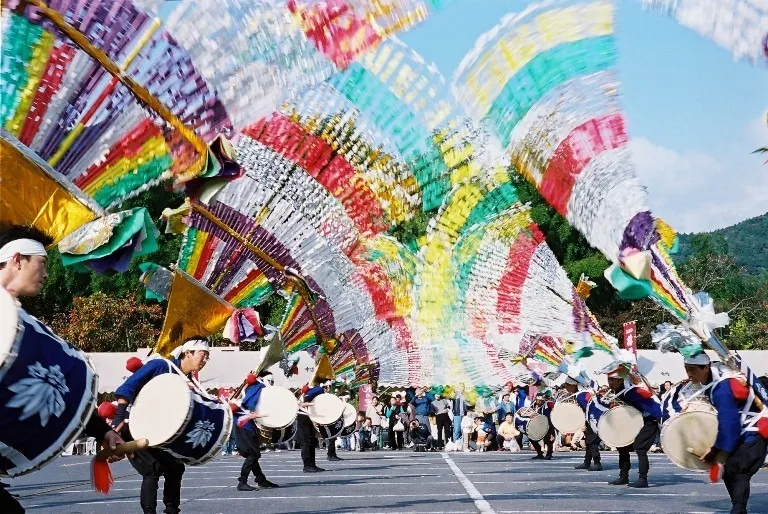
TANIGUMI DANCE PRESERVATION SOCIETY
2 Ibigawa-cho, Ibi-gun, Gifu Ibigawa Tourism Plaza
0585-55-2020
http://www.town.ibigawa.lg.jp/kankoujyouhou/index.html
The Tanigumi Dance is a traditional Japanese dance that began around 800 years ago. It is said to have originated when samurai warriors called Genji danced to celebrate victory in battle. Later, during a severe drought, villagers performed this dance as an offering to the gods, praying, “Please send us rain.” Soon after, rain fell, nourishing the rice fields and allowing crops to grow in abundance. Because of this, people came to call this dance the “The Rain Dance” or “The Bountiful Harvest Dance” and cherished it. Dancers carry a 4-meter-long phoenix feather made of bamboo on their backs and hold a large drum against their chests. The sounds of flutes and conch shells echo through the mountains, blending with the dancers’ beautiful movements. Registered as an Important Intangible Cultural Property of Gifu Prefecture in 1958, it is still passionately preserved by the local community today.
TOKORO SHUZO BREWERY
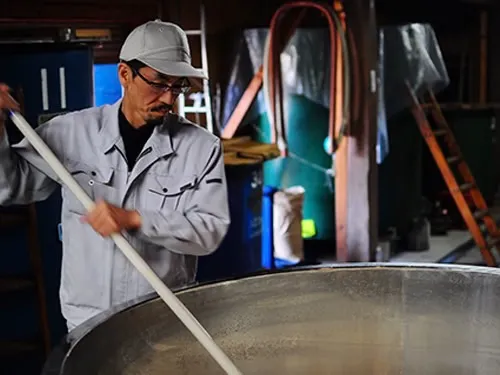
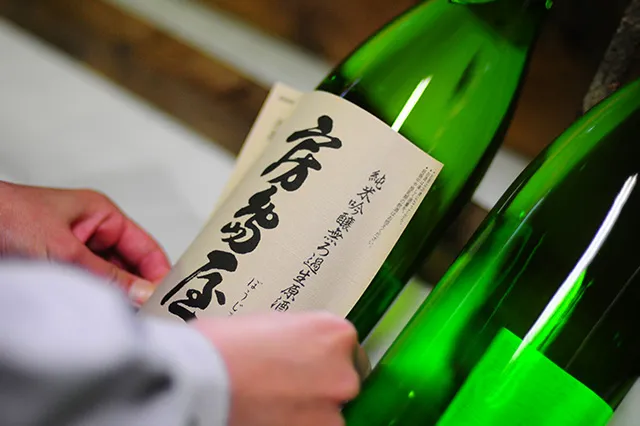


TOKORO SHUZO BREWERY
537-1 Miwa, Ibigawa-cho, Ibi-gun, Gifu 501-0619
0585-22-0002
https://tokoroshuzo.com/
Tokoro Shuzo is a small sake brewery located upstream along the Ibigawa River. Its flagship brand, “Boshimaya,” is known as a sake to enjoy with food. Delicious served chilled or warmed, it enhances the flavors of your meal. A particularly popular pairing is “Tokokoro BLACK” enjoyed with fried shrimp. The crispy fried shrimp and the gentle acidity of the sake complement each other beautifully, offering a new discovery of deliciousness. Inside the brewery, the air is cool, filled with the scent of rice and water, where craftsmen carefully brew the sake. The flavor of the sake deepens over time, mellowing as it ages. Guests are invited to tour the facility and sample its sake, enjoying a full sensory experience of Japanese sake culture.
KASUGA MORIMORI VILLAGE

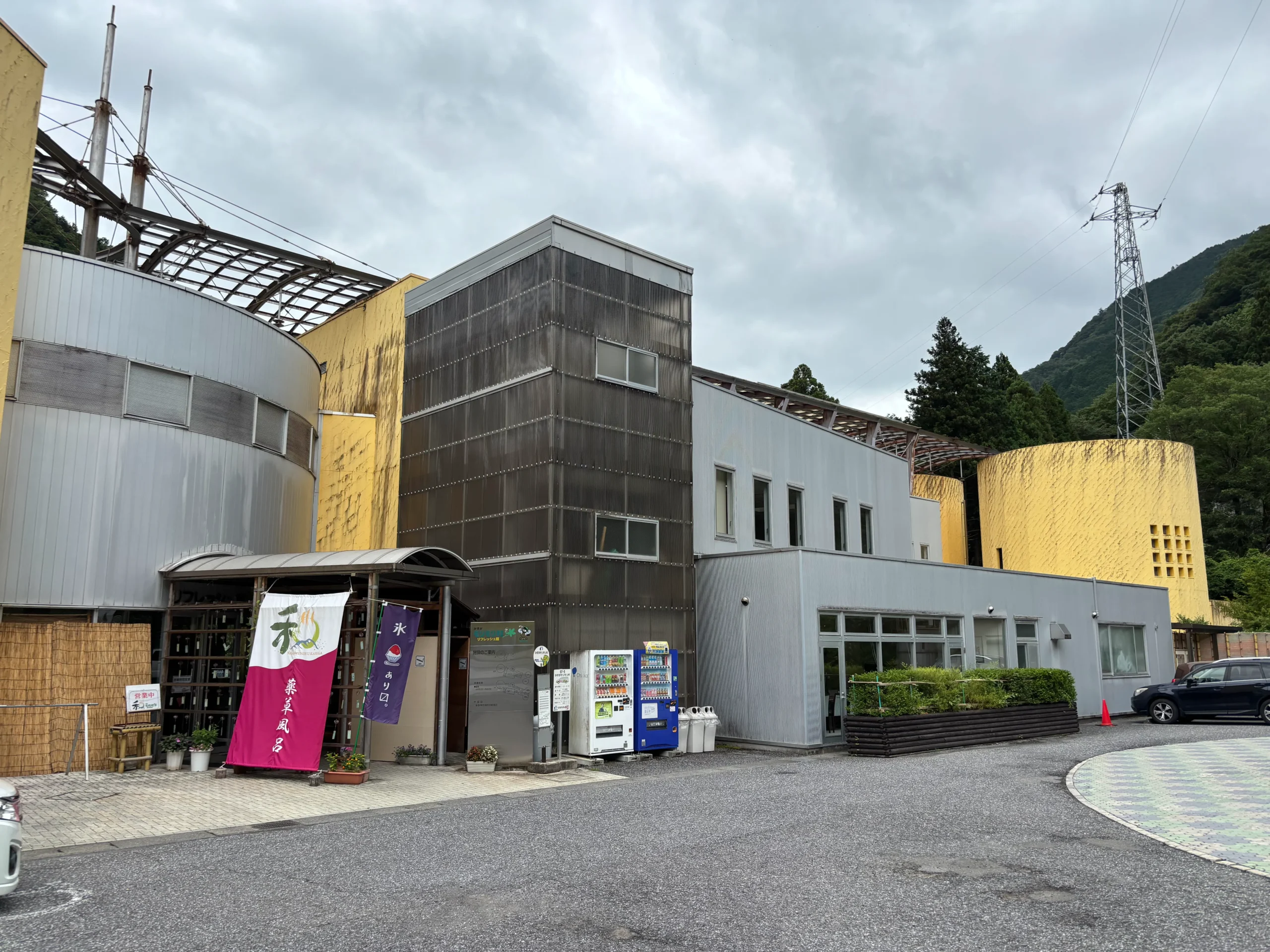
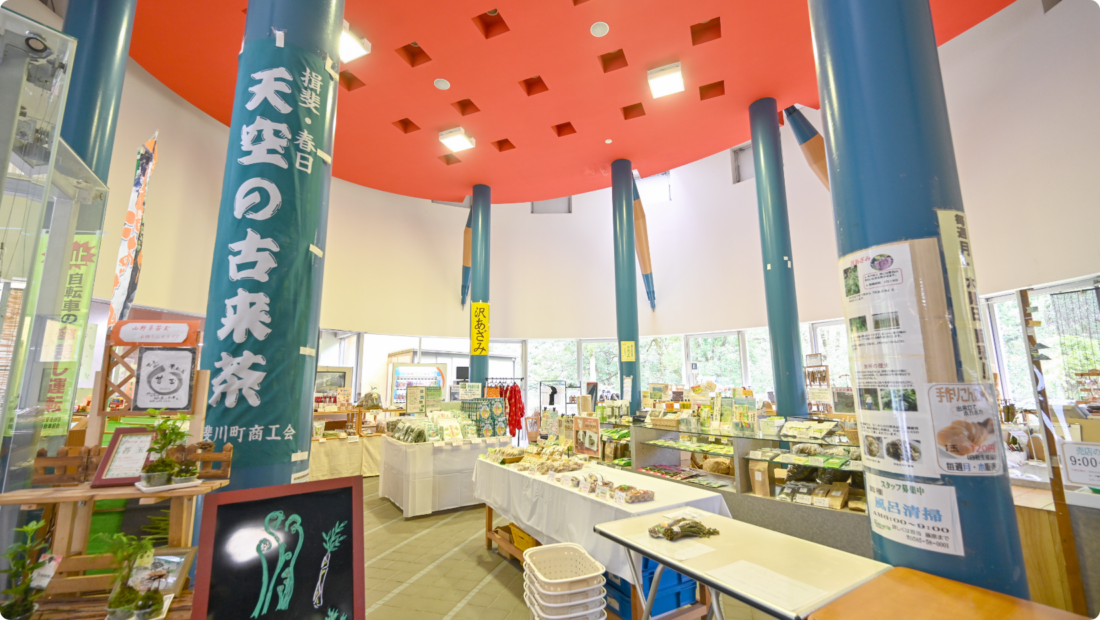

KASUGA MORIMORI VILLAGE
3429 Rokuai, Kasuga, Ibigawa-cho, Ibi-gun, Gifu 503-2502
0585-57-2976
https://morimorimura.com/
Kasuga Village is renowned as a village of medicinal herbs. At the restaurant “Harmony Forest” within it, you can enjoy special herbal French cuisine made with local herbs and vegetables. The dishes are gentle on the body and visually stunning. The menu, utilizing nature’s bounty like mugwort, thistle, and local mushrooms, offers flavors you can only experience here. From the restaurant windows, views of autumn foliage and forest greenery unfold, allowing you to dine leisurely while feeling the changing seasons. Time flows gently here, where dining warms your body and lightens your heart.
ONIWA CAFÉ DONGURI




ONIWA CAFÉ DONGURI
2300 Kitagata, Ibigawa-cho, Ibi-gun, Gifu 501-0601
090-7916-8066
https://www.instagram.com/oniwa_cafe_donguri/
Kasuga Village is renowned as a village of medicinal herbs. At the restaurant “Harmony Forest” within it, you can enjoy special herbal French cuisine made with local herbs and vegetables. The dishes are gentle on the body and visually stunning. The menu, utilizing nature’s bounty like mugwort, thistle, and local mushrooms, offers flavors you can only experience here. From the restaurant windows, views of autumn foliage and forest greenery unfold, allowing you to dine leisurely while feeling the changing seasons. Time flows gently here, where dining warms your body and lightens your heart.
DARUMA-DO CONFECTIONERY

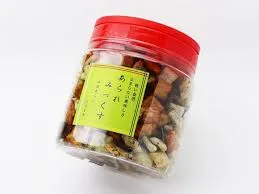


DARUMA-DO CONFECTIONERY
0585-55-2313
459-288 Naire, Tanigumi, Ibigawa-cho, Ibi-gun, Gifu 501-1314
https://www.tanigumi-arare.com
Tanigumi Arare no Sato is a store for rice crackers operated by the local long-established shop “Darumado Seika”. In Japan, arare (rice crackers made by roasting glutinous rice) have traditionally been a celebratory food. The name arare comes from the small hailstones (arare) that fall in winter. They are carefully made one by one using domestically produced glutinous rice and pure water drawn from 100 meters underground. The store displays over 100 varieties of arare, including soy sauce, salt, sweet-savory, and nori-flavored. In the warm atmosphere of the store, you can sample different flavors, making finding your favorite part of the experience. Their eye-catching designs and distinctive shapes make them perfect souvenirs. It’s a place where you can experience Japan’s rice culture and “spirit of hospitality.”
TANIGUMISAN KEGONJI SANDO MATSUMOTOYA
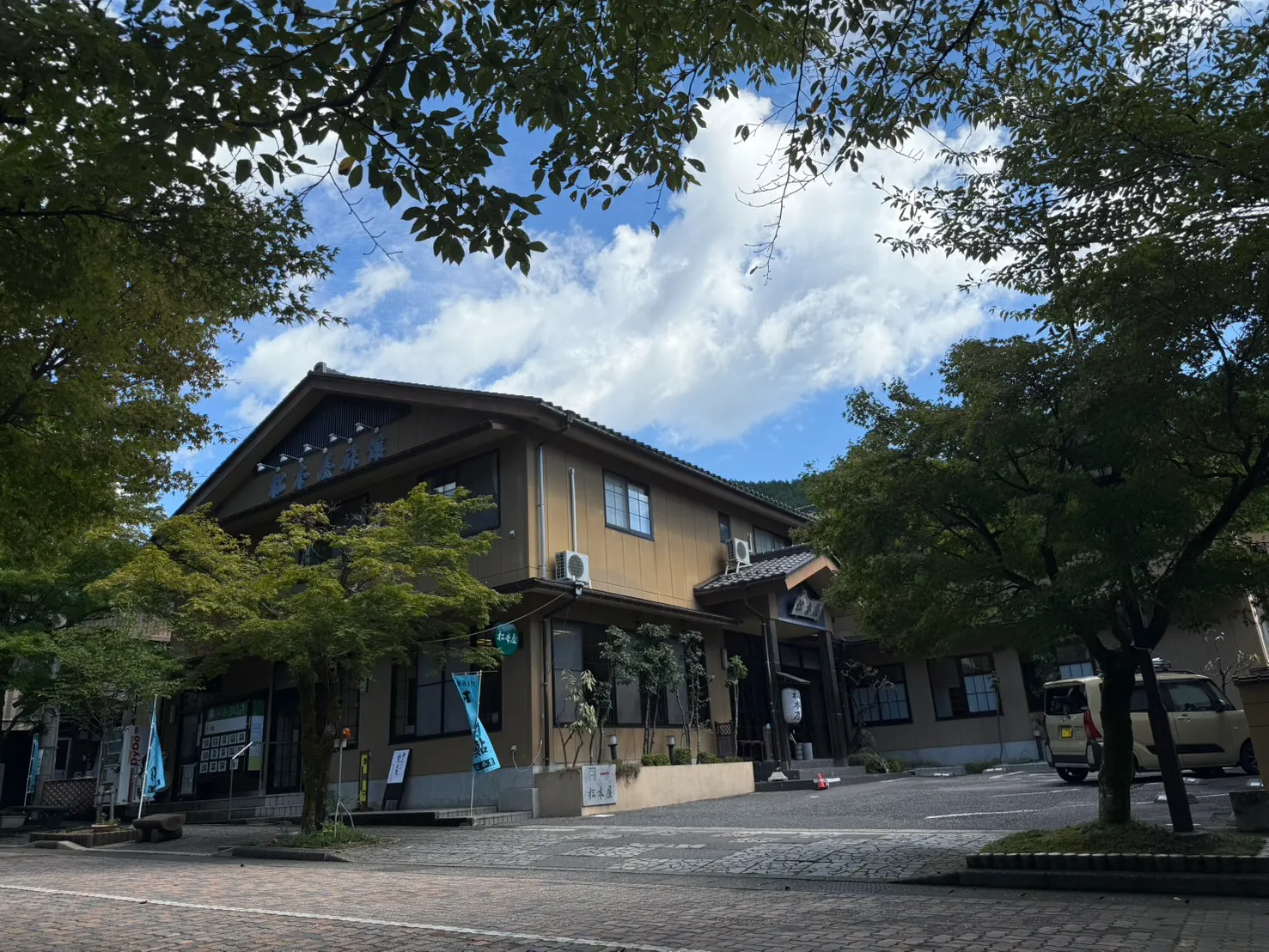
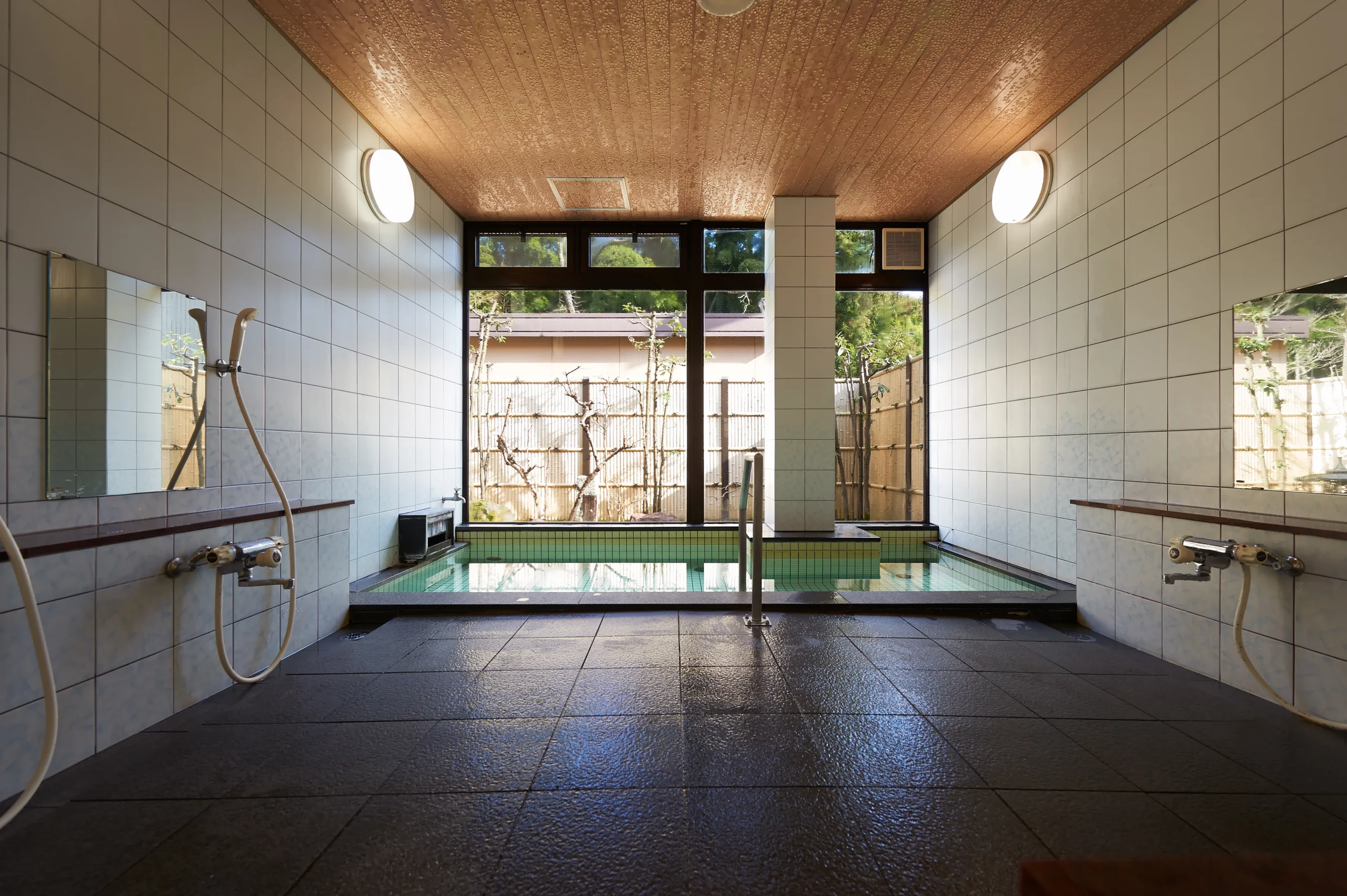


TANIGUMISAN KEGONJI SANDO MATSUMOTOYA
290 Tanigumi Tokuzumi, Ibigawa-cho, Ibi-gun, Gifu 501-1311
0585-55-2326
https://yado-matsumotoya.jp/
Matsumotoya is a historic inn established in 1868. Located at the gate of Tanigumi Kegonji Temple, it has welcomed travelers for over 150 years. Inside, the building retains the atmosphere of old Japan, filled with the gentle scent of wood. Every season is beautiful: cherry blossoms in spring, lush greenery in summer, vibrant autumn leaves, and snowy landscapes in winter. Meals feature local ingredients, offering warm, homemade flavors. At night, you can hear the sounds of insects and in the morning, singing birds greet you, making time seem to slow down. It’s an inn where you can forget the hustle of the city and find peace of mind.



